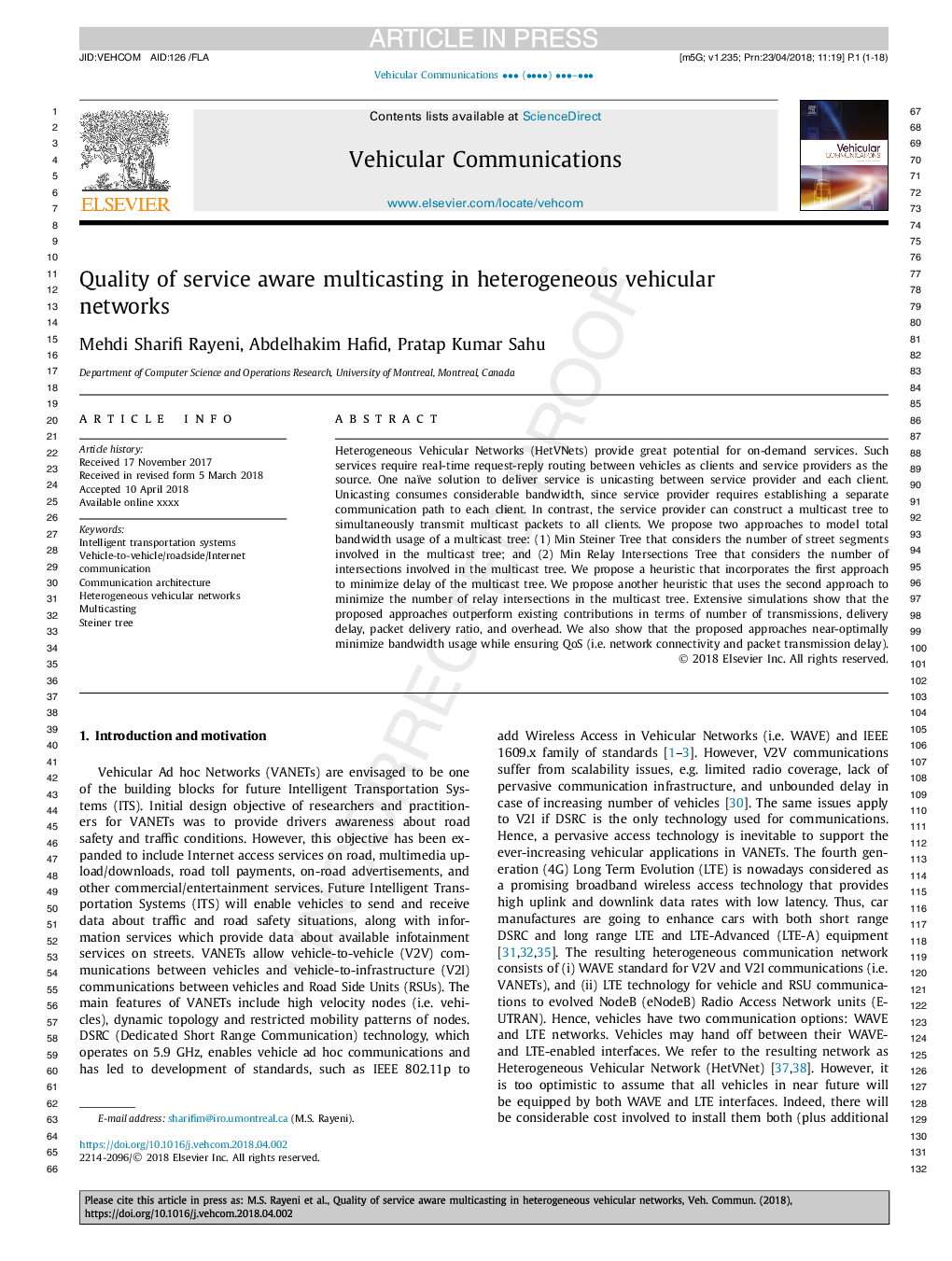| Article ID | Journal | Published Year | Pages | File Type |
|---|---|---|---|---|
| 6890073 | Vehicular Communications | 2018 | 18 Pages |
Abstract
Heterogeneous Vehicular Networks (HetVNets) provide great potential for on-demand services. Such services require real-time request-reply routing between vehicles as clients and service providers as the source. One naïve solution to deliver service is unicasting between service provider and each client. Unicasting consumes considerable bandwidth, since service provider requires establishing a separate communication path to each client. In contrast, the service provider can construct a multicast tree to simultaneously transmit multicast packets to all clients. We propose two approaches to model total bandwidth usage of a multicast tree: (1) Min Steiner Tree that considers the number of street segments involved in the multicast tree; and (2) Min Relay Intersections Tree that considers the number of intersections involved in the multicast tree. We propose a heuristic that incorporates the first approach to minimize delay of the multicast tree. We propose another heuristic that uses the second approach to minimize the number of relay intersections in the multicast tree. Extensive simulations show that the proposed approaches outperform existing contributions in terms of number of transmissions, delivery delay, packet delivery ratio, and overhead. We also show that the proposed approaches near-optimally minimize bandwidth usage while ensuring QoS (i.e. network connectivity and packet transmission delay).
Related Topics
Physical Sciences and Engineering
Computer Science
Computer Networks and Communications
Authors
Mehdi Sharifi Rayeni, Abdelhakim Hafid, Pratap Kumar Sahu,
